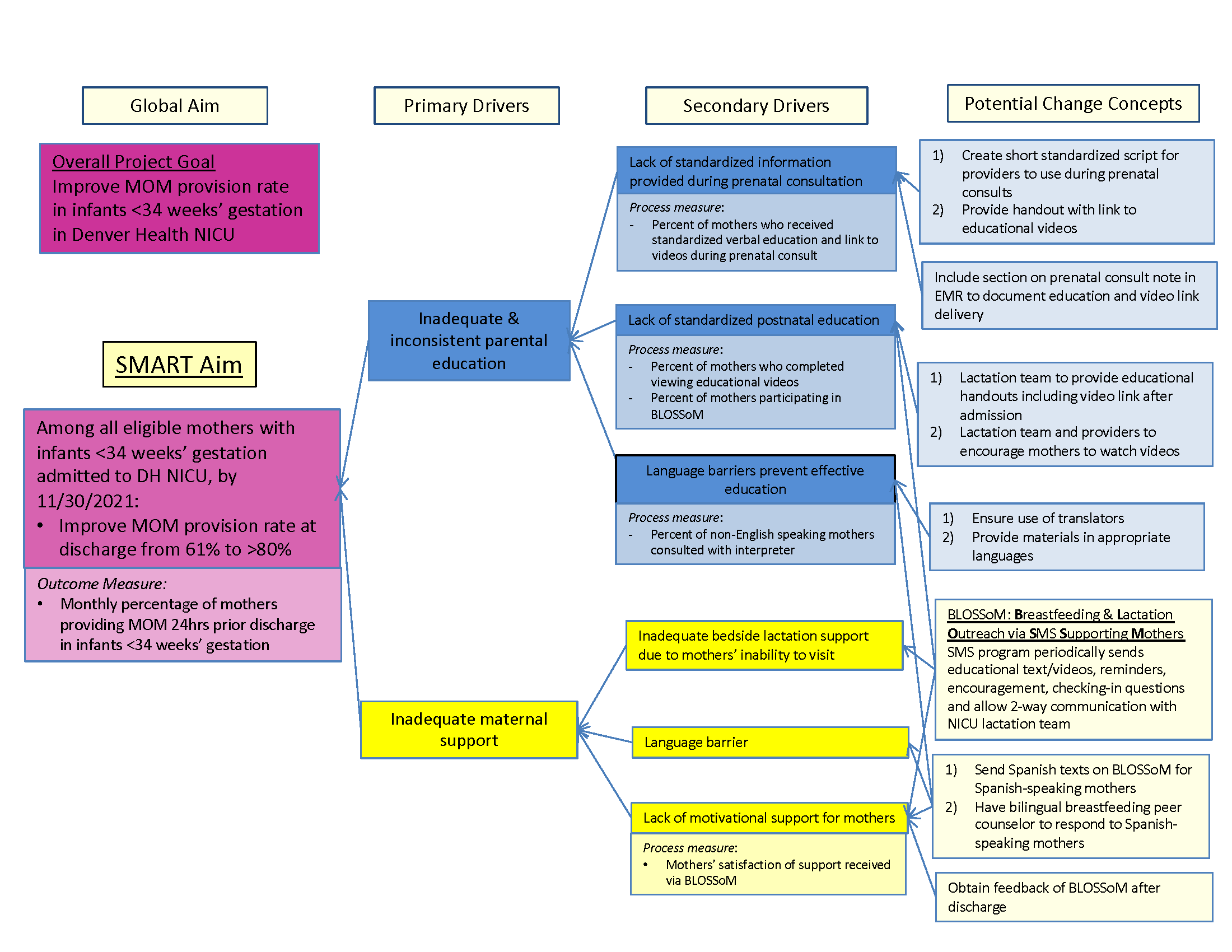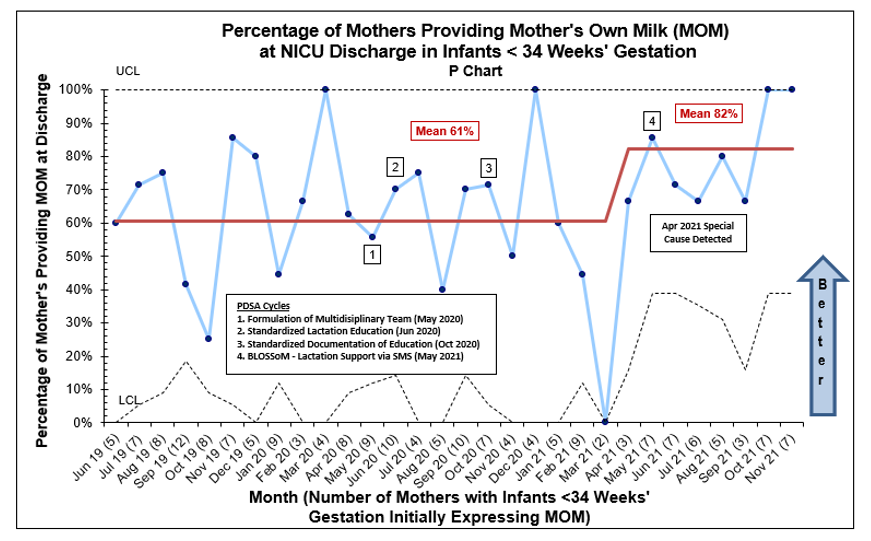Neonatal Quality Improvement
Category: Abstract Submission
Neonatal Quality Improvement III: GI and Nutrition
234 - BLOSSoM: Breastfeeding & Lactation Outreach via SMS Supporting Mothers to Improve Human Milk Provision for Infants <34 Weeks
Friday, April 22, 2022
6:15 PM - 8:45 PM US MT
Poster Number: 234
Publication Number: 234.128
Publication Number: 234.128
Madoka Hayashi, University of Colorado School of Medicine, Denver, CO, United States; Kelly K. Huber, Denver Health, Denver, CO, United States; Colette Rankin, Denver Health, Thornton, CO, United States; Brittany V. Boyajian, Denver Health, Aurora, CO, United States; Angelena Martinez, Denver Health Hospital, Denver, CO, United States; Theresa Grover, University of Colorado School of Medicine, Aurora, CO, United States; Genie Roosevelt, University of Colorado School of Medicine, Denver, CO, United States

Madoka Hayashi, MD
Neonatologist
University of Colorado School of Medicine
Denver, Colorado, United States
Presenting Author(s)
Background: Mother’s own milk (MOM) has countless benefits reducing complications of preterm birth. Despite high initiation rates of MOM expression, almost half of preterm infants do not receive MOM at discharge. Racial/ethnic and socioeconomic disparities exist; Hispanic, non-Hispanic blacks and Medicaid-insured dyads consistently have lower MOM provision rates. Frequent outreach and use of short message service (SMS) have shown MOM provision improvement in term dyads.
Objective: In our mostly Hispanic and Medicaid-insured NICU, our baseline monthly MOM provision rate at discharge for infants < 34 weeks’ gestation was 61%. We aimed to improve MOM provision rate to >80% by implementing standardized lactation education and Breastfeeding & Lactation Outreach via SMS Supporting Mothers (BLOSSoM).
Design/Methods: Baseline data was collected June 2019- April 2020. A multidisciplinary team identified barriers (Figure 1) and implemented interventions through PDSA cycles: education/documentation period May 2020- April 2021 (standardized lactation education including use of videos, standardized electronic medical record documentation of education delivery), and BLOSSoM (SMS program periodically sends educational texts/videos, reminders, checking-in texts and allow 2-way communication with NICU lactation) May 2021- November 2021. A SPC chart was used to evaluate the primary outcome measure: percent of MOM provision at NICU discharge for infants < 34 weeks. BLOSSoM participants received a questionnaire to rate support on a 5-point Likert scale (1 not supportive, 5 most supportive).
Results: There was no difference in maternal race/ethnicity, primary language, insurance, age, infant’s gestational age, birthweight, mode of delivery, length of stay or disposition between the three periods. There were fewer males in the education/documentation period (p=.04) and fewer singleton deliveries in the baseline period (p=.02). (Table) Monthly MOM provision rate improved from 61% to 82%. (Figure 2) 36/42 (86%) BLOSSoM participants completed an evaluation. The program was rated most supportive by 32/36 (89%) mothers. Most mothers found the videos memorable (29/36, 81%), and also liked team checking in (21/36, 58%) and 2-way texting (10/36, 28%).Conclusion(s): Using a multidisciplinary approach, we improved monthly MOM provision rate at discharge for infants < 34 weeks’ gestation. SMS providing educational texts/media and 2-way communication supporting lactating NICU mothers was critical to our success. Providing another method of communication through SMS was well accepted and valued by the majority.
Key Driver Diagram: Improving Mother’s Own Milk (MOM) Provision in Infants < 34 Weeks’ Gestation in Denver Health NICU
Percent of Mothers Providing Mother's Own Milk (MOM) at NICU Discharge in Infants < 34 Weeks' Gestation
Objective: In our mostly Hispanic and Medicaid-insured NICU, our baseline monthly MOM provision rate at discharge for infants < 34 weeks’ gestation was 61%. We aimed to improve MOM provision rate to >80% by implementing standardized lactation education and Breastfeeding & Lactation Outreach via SMS Supporting Mothers (BLOSSoM).
Design/Methods: Baseline data was collected June 2019- April 2020. A multidisciplinary team identified barriers (Figure 1) and implemented interventions through PDSA cycles: education/documentation period May 2020- April 2021 (standardized lactation education including use of videos, standardized electronic medical record documentation of education delivery), and BLOSSoM (SMS program periodically sends educational texts/videos, reminders, checking-in texts and allow 2-way communication with NICU lactation) May 2021- November 2021. A SPC chart was used to evaluate the primary outcome measure: percent of MOM provision at NICU discharge for infants < 34 weeks. BLOSSoM participants received a questionnaire to rate support on a 5-point Likert scale (1 not supportive, 5 most supportive).
Results: There was no difference in maternal race/ethnicity, primary language, insurance, age, infant’s gestational age, birthweight, mode of delivery, length of stay or disposition between the three periods. There were fewer males in the education/documentation period (p=.04) and fewer singleton deliveries in the baseline period (p=.02). (Table) Monthly MOM provision rate improved from 61% to 82%. (Figure 2) 36/42 (86%) BLOSSoM participants completed an evaluation. The program was rated most supportive by 32/36 (89%) mothers. Most mothers found the videos memorable (29/36, 81%), and also liked team checking in (21/36, 58%) and 2-way texting (10/36, 28%).Conclusion(s): Using a multidisciplinary approach, we improved monthly MOM provision rate at discharge for infants < 34 weeks’ gestation. SMS providing educational texts/media and 2-way communication supporting lactating NICU mothers was critical to our success. Providing another method of communication through SMS was well accepted and valued by the majority.
Key Driver Diagram: Improving Mother’s Own Milk (MOM) Provision in Infants < 34 Weeks’ Gestation in Denver Health NICU
Percent of Mothers Providing Mother's Own Milk (MOM) at NICU Discharge in Infants < 34 Weeks' Gestation
